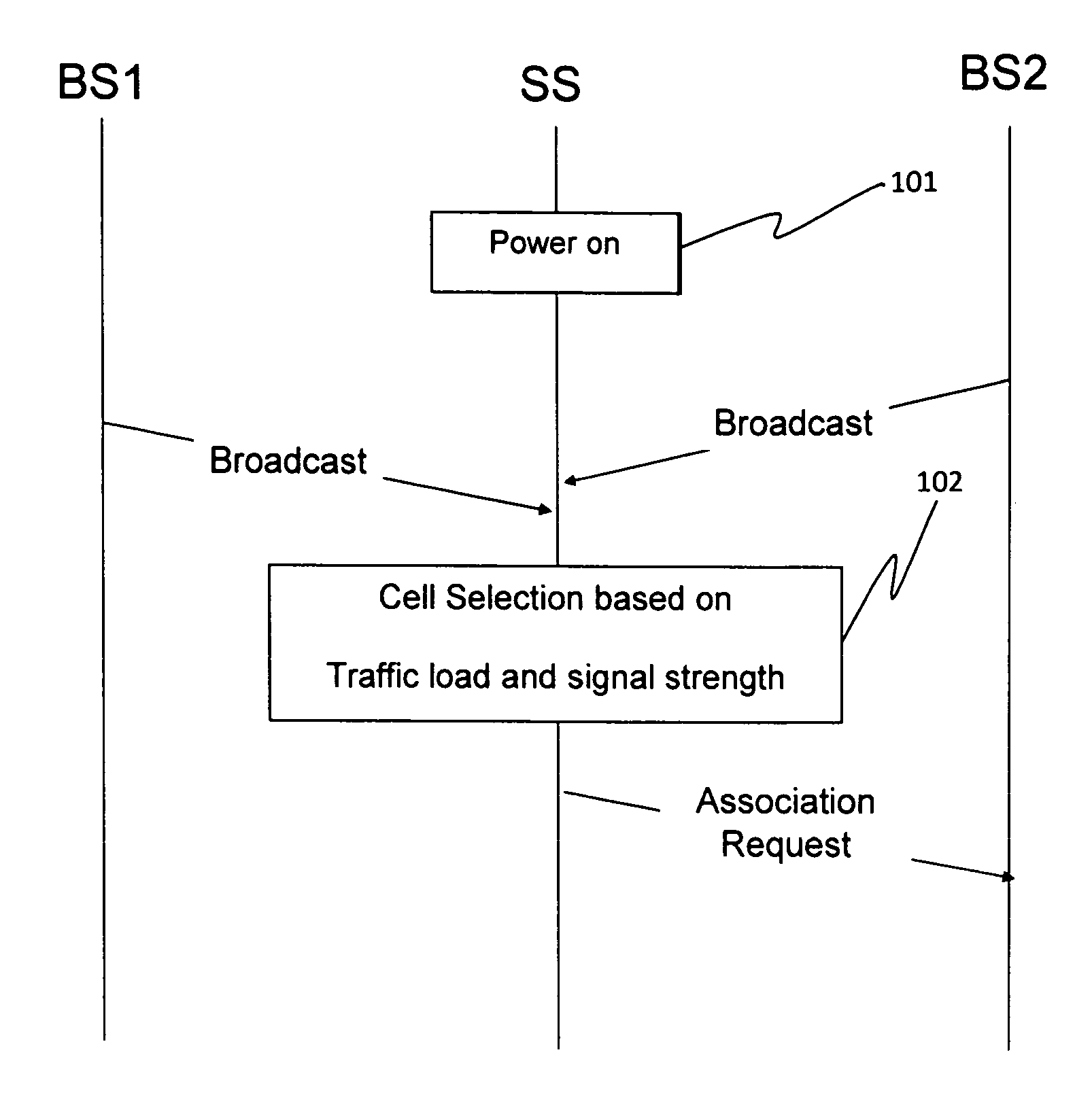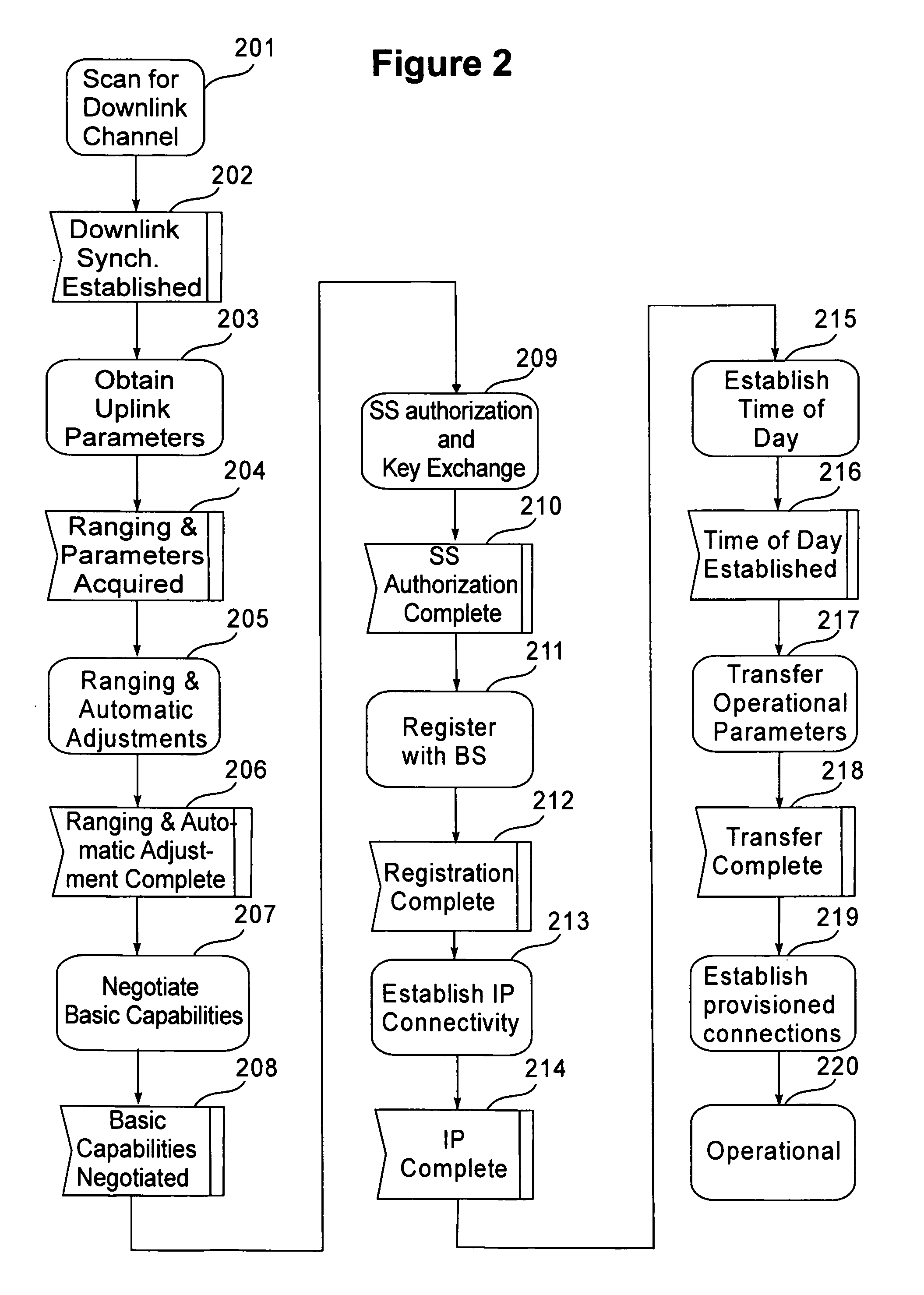Calculation and broadcast of cell-load ratio and intelligent cell selection for IEEE802.16M
a cell-load ratio and intelligent cell technology, applied in the field of data transmission methods and apparatuses, can solve the problems of low throughput, long delay and jitter, and do not disclose cell-load information in any base station broadcast message, and achieve the effect of improving service quality
- Summary
- Abstract
- Description
- Claims
- Application Information
AI Technical Summary
Benefits of technology
Problems solved by technology
Method used
Image
Examples
Embodiment Construction
[0038]The present invention provides a systematic mechanism for calculating and broadcasting the cell-load ratio, and a method for intelligent cell selection. Different embodiments will be discussed separately in the following description.
The Calculation of Cell-Load Ratio
[0039]Cell-load ratio is defined as a ratio of an average load of a cell to the capacity of the cell. In the present invention, the cell-load ratio may be calculated by equation (1):
rcl,n=(1-α)rcl,n-1+dn / Sn,(1)
where rcl,n-1 is the previous value of the cell-load ratio, rcl,n is the instant cell-load ratio, α is the forgetting factor. Here, α−1 equals the equivalent averaging period in a number of orthogonal frequency-division multiplexing (OFDM) frames (or transmission time intervals (TTIs) for the LTE) for the exponential smoothing filter. Parameters dn and Sn, are the instantaneous cell load and frame capacity respectively. Parameters dn and Sn are quantified as the number of the minimum scheduling units in an or...
PUM
 Login to View More
Login to View More Abstract
Description
Claims
Application Information
 Login to View More
Login to View More - R&D
- Intellectual Property
- Life Sciences
- Materials
- Tech Scout
- Unparalleled Data Quality
- Higher Quality Content
- 60% Fewer Hallucinations
Browse by: Latest US Patents, China's latest patents, Technical Efficacy Thesaurus, Application Domain, Technology Topic, Popular Technical Reports.
© 2025 PatSnap. All rights reserved.Legal|Privacy policy|Modern Slavery Act Transparency Statement|Sitemap|About US| Contact US: help@patsnap.com



